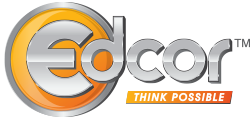
In today’s emerging business landscape, the workplace has essentially transformed into a ‘learnplace’ emphasizing the importance of education benefits and their role in being a strategic element in recruiting, retaining, and developing talent. However, there are many providers out there who market education benefits with a one-size-fits-all approach, which is ineffective at best and can severely dent your long-term organizational goals. After spending 20+ years in this industry, I can vouch for the fact that the only way to successfully implement education benefits is by using a strategic, tailored approach that ensures that these benefits align with both employer objectives and employee needs. In this post, I want to take you through how US employers can strategically manage their education benefits portfolio to maximize impact and value, drawing from key strategies that focus on targeted and holistic benefits.
Education Benefits Aren’t One-Size-Fits-All
First things first, let’s address the elephant in the room. Education benefits are not a universal solution. Period. They need to be customized to meet the specific needs of different employees and unique organizational goals. For the past 40+ years here at Edcor we have been offering customized solutions for our Clients – for some the Debt-free degree program works optimally for specific sections of their employee base for others the Critical Pathway works better, and for others, the traditional more flexible way of upskilling with degrees works best. Flexibility and tons of options are the first step toward creating a more effective benefits program that will deliver the results that you are hoping for. Let’s elaborate.
Action Step 1: Identify the Needs of Your Workforce
The first step always is identifying the unique needs of your workforce and then formulating a benefits plan accordingly, possibly with the help of an experienced third-party education benefits provider.
Recruitment: If you face more challenges on the recruitment front consider what kind of education benefits will attract top talent? For example, would offering scholarships along with tuition assistance be more appealing to prospective employees?
Retention: If retention is a challenge, targeted benefits like loan repayment assistance along with tuition assistance would probably work better for your workforce, especially in the high-turnover sectors.
Upskilling: Employees consider continuous learning opportunities as a highly desirable benefit because development can help keep skills relevant and boost career growth. A LinkedIn Learning report indicates that 94% of employees would stay longer at a company that invested in their career development. Having a holistic tuition assistance policy that covers traditional and non-traditional short-term certifications can go a long way to satisfy upskilling needs.
At Edcor we have everything-education-benefits as offerings to cater to our clients and can help you navigate the nitty-gritty of implementation.
Focus on Targeted Initiatives
Customizing the education benefits portfolio for specific segments of the workforce to address critical needs and developing a talent pipeline in the high-turnover areas can yield higher returns than offering blanket education benefits to all employees.
Action Step 2: Tailor Benefits for Hard-to-Retain Segments
Focus your education benefits on sections of the workforce that are challenging to retain. For example, in the Healthcare Industry, given the shortage of skilled professionals particularly Nurses, offering student loan repayment assistance or scholarship funding for specialized degrees can help retain healthcare workers.
Critical Pathways are a great tool for providing targeted education benefits to employees in key positions essential to your business operations and upskilling them. In the short term, this may involve a higher education benefit limit for funding advanced professional development that aligns with their career path and organizational needs. Nonetheless, the return on investment (ROI) would still be much higher supported by the Bureau of Labor Statistics data, which shows that companies investing in targeted skill development see an increase in employee engagement and productivity.
Holistic Education Benefits Portfolio
A well-rounded education benefits portfolio caters to employees in all stages of their careers and should include student loan repayment assistance/scholarships, along with tuition assistance. This integrates various forms of support to create a comprehensive development program.
Action Step 3: Holistic Portfolio
Education benefits can be tailored to retain and upskill the workforce in all stages of their careers right from fresh recruits to mid- and long-tenured employees.
Scholarships: Our data shows that organizations providing dependent scholarships have a higher retention rate among long-tenured employees and retain recruits for much longer than the industry standards, supporting the fact that scholarships for fresh recruits and dependents of long-tenured employees not only help in employee retention but also support succession planning by helping long-tenured employees and their families financially to access educational opportunities.
Student Loan Repayment Assistance: Our Freedom program data shows that this benefit is particularly relevant in high-turnover sectors like healthcare. The contribution amount doesn’t seem to have much effect after a certain limit. As long as the employer is contributing towards this benefit – even a modest loan repayment dollar amount significantly impacts employee satisfaction and retention.
Managing Perceptions and Financial Concerns
One of the major roadblocks in implementing a holistic education benefits portfolio is the concern about straining the budgets and affecting the bottom line. However, focusing on strategic implementation rather than cost can alleviate these concerns.
Action Step 4: Dissociate from Dollar Amounts
Strategically implementing education benefits effectively alleviates the overall cost of these benefits, and yet yields the results that you are hoping for.
Flexible Spending: Organizations that manage their education benefits flexibly see a higher ROI compared to those with rigid programs. Allocating funds where they will have the greatest impact, such as in areas that align with business objectives or where there is a high need for development or turnover, will yield a higher ROI.
Lifetime Caps: Implementing lifetime caps on education benefits can help manage costs while still providing substantial support to employees. Lifetime caps can effectively balance benefit contribution with cost control, leading to an increase in employee participation in educational programs.
Thinking Beyond Traditional Education Benefits
Finally, expand your education benefits beyond the conventional offerings.
Action Step 5: Think Beyond GED to nurture and future-proof your workforce
Even though GED is a great benefit for starting the frontline on the right path towards educational and professional growth, their journey doesn’t have to stop there. Think about how your education benefits can be tailored to fit the specific needs of your organization and workforce beyond GED. Consider short-term stackable certificate programs that provide training in specific areas of need for your industry and over the period translate into a higher degree if working towards traditional degrees is not achievable. This investment will convey to employees that their employer is committed to their personal and professional development and improve employee morale, job satisfaction, and loyalty.
In sum, strategic management of education benefits involves more than just offering a variety of programs. It requires a thoughtful approach that aligns benefits with organizational goals, addresses specific employee needs, and communicates a genuine commitment to employee development. By focusing on targeted initiatives, developing a holistic portfolio, and managing financial perceptions, US employers can create a benefits program that supports both employee growth and organizational success. Whether through student loan repayment, scholarships, or customized training programs, a strategic approach to education benefits can lead to a win-win situation for both employees and employers alike.
Edcor offers zero-commitment consultations to willing Fortune 500 companies who want to make their programs cost-effective while tailoring the solution to fulfill their organizational goals. Feel free to reach out to us.
Think Edcor. Think Possible!

Edcor is a woman-owned business and is the benchmark in education benefits administration. For 40+ years, our customized service and solutions have allowed Fortune 500 Clients to use education benefits programs for employee recruiting, retention, and development. Please feel free to reach out to us!
Adrienne L. Way, Edcor Owner, President, and CEO



